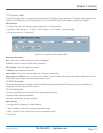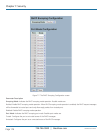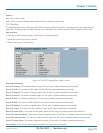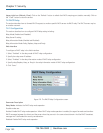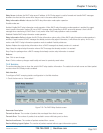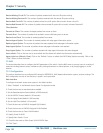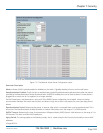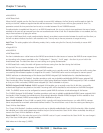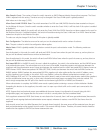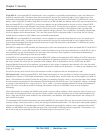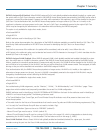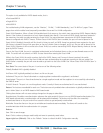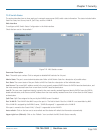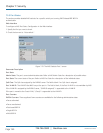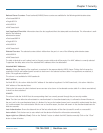
724-746-5500 | blackbox.com
724-746-5500 | blackbox.com
Page 185
LGB5028A User‘s Manual
Chapter 7: Security
Max. Reauth. Count: The number of times the switch transmits an EAPOL Request Identity frame without response. The Guest
VLAN is adjusted with this setting. The value can only be changed if the Guest VLAN option is globally enabled.
Valid values are in the range [1; 255].
Allow Guest VLAN if EAPOL Seen: The switch remembers if an EAP over LAN (EAPOL) frame has been received on the port
for the lifetime of the port. Once the switch considers whether to enter the Guest VLAN, it will first check if this option is enabled
or disabled. If
disabled (unchecked; default), the switch will only enter the Guest VLAN if an EAPOL frame has not been received on the port for
the lifetime of the port. If enabled (checked), the switch will consider entering the Guest VLAN even if an EAPOL frame has been
received on the port for the lifetime of the port.
The value can only be changed if the Guest VLAN option is globally enabled.
Port Configuration: The table has one row for each port on the selected switch and a number of columns.
Port: The port number for which the configuration below applies.
Admin State: If NAS is globally enabled, this selection controls the port's authentication mode. The following modes are
available:
Force Authorized: In this mode, the switch will send one EAPOL Success frame when the port link comes up, and any client on
the port will be allowed network access without authentication.
Force Unauthorized: In this mode, the switch will send one EAPOL Failure frame when the port link comes up, and any client on
the port will be disallowed network access.
Port-based 802.1X: In the 802.1X world, the user is called the supplicant, the switch is the authenticator, and the RADIUS server
is the authentication server. The authenticator acts as the man-in-the-middle, forwarding requests and responses between the
supplicant and the authentication server. Frames sent between the supplicant and the switch are special 802.1X frames, known as
EAPOL frames. EAPOL frames encapsulate EAP PDUs (RFC3748). Frames sent between the switch and the RADIUS server are
RADIUS packets. RADIUS packets also encapsulate EAP PDUs together with other attributes like the switch’s IP address, name,
and the supplicant’s port number on the switch. EAP is very flexible; it allows for different authentication methods, such as
MD5-Challenge, PEAP, and TLS. The authenticator (the switch) doesn't need to know which authentication method the supplicant
and the authentication server are using, or how many information exchange frames are needed for a particular method. The
switch simply encapsulates the EAP part of the frame into the relevant type (EAPOL or RADIUS) and forwards it.
When authentication is complete, the RADIUS server sends a special packet containing a success or failure indication. Besides
forwarding this decision to the supplicant, the switch uses it to open up or block traffic on the switch port connected to the
supplicant.
NOTE: Suppose that two back-end servers are enabled and the server timeout is configured to X seconds (using the AAA
configuration page), and suppose that the first server in the list is currently down (but not considered dead).
If the supplicant retransmits EAPOL Start frames at a rate faster than X seconds, then it will never get authenticated, because the
switch will cancel ongoing back-end authentication server requests whenever it receives a new EAPOL Start frame from the
supplicant.
And since the server hasn't yet failed (because the X seconds haven't expired), the same server will be contacted upon the next
back-end authentication server request from the switch. This scenario will loop forever. Therefore, the server timeout should be
smaller than the supplicant's EAPOL Start frame retransmission rate.



